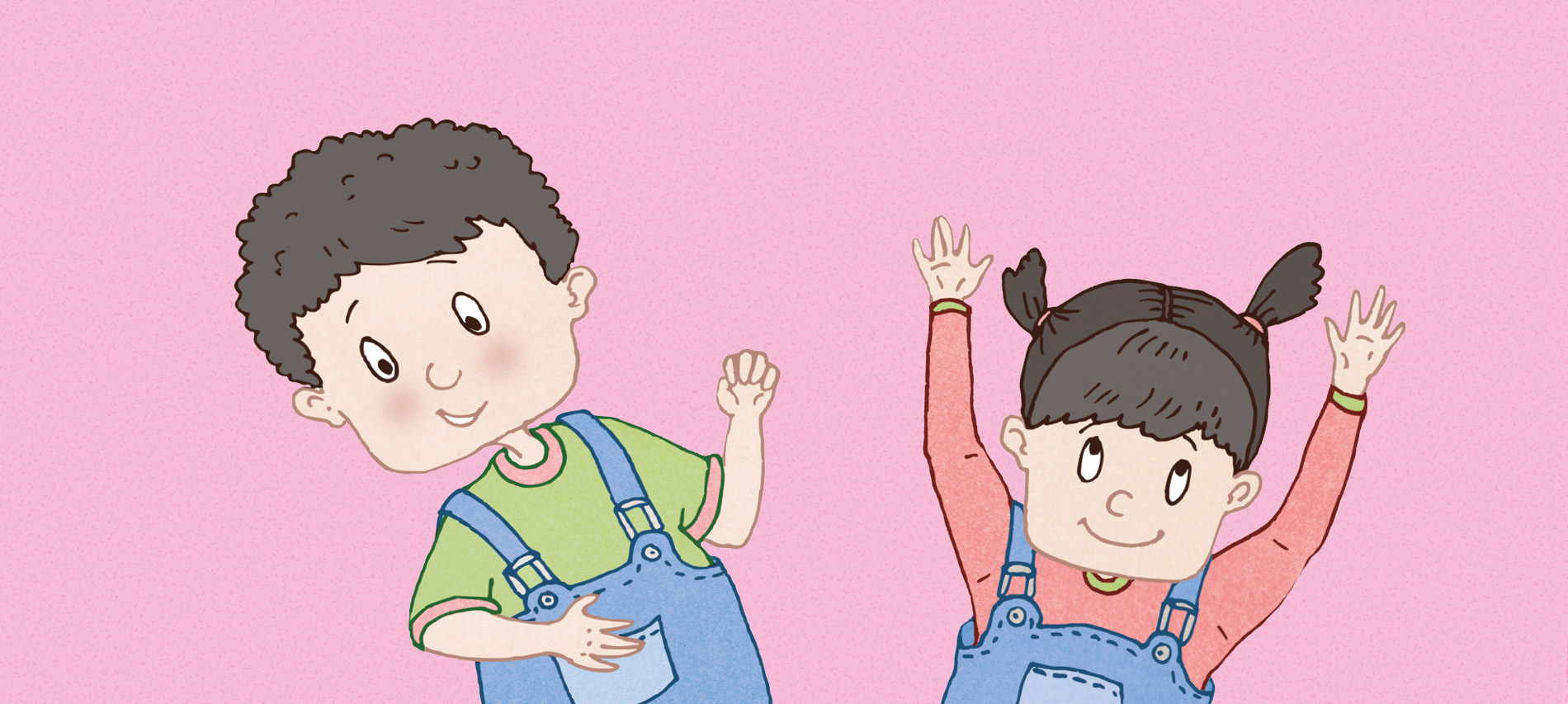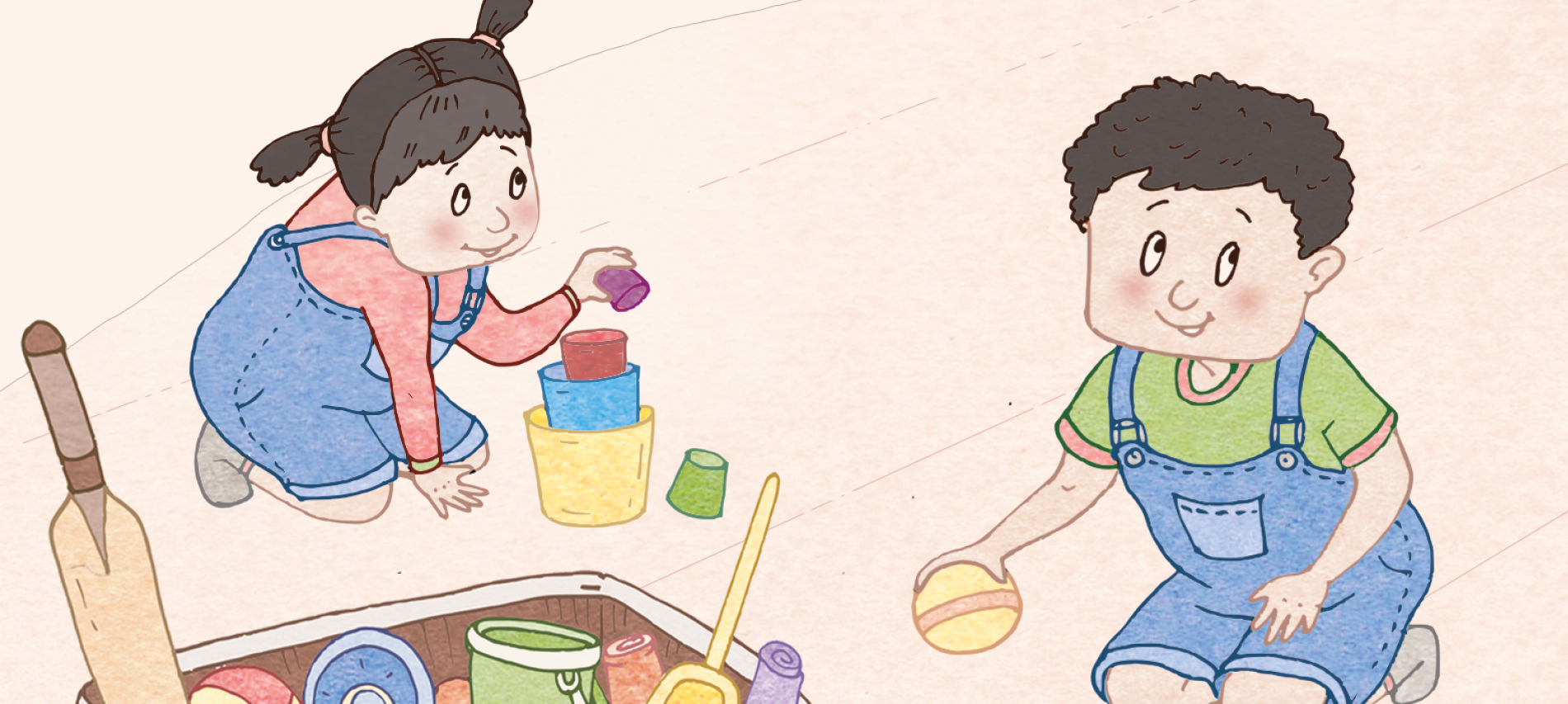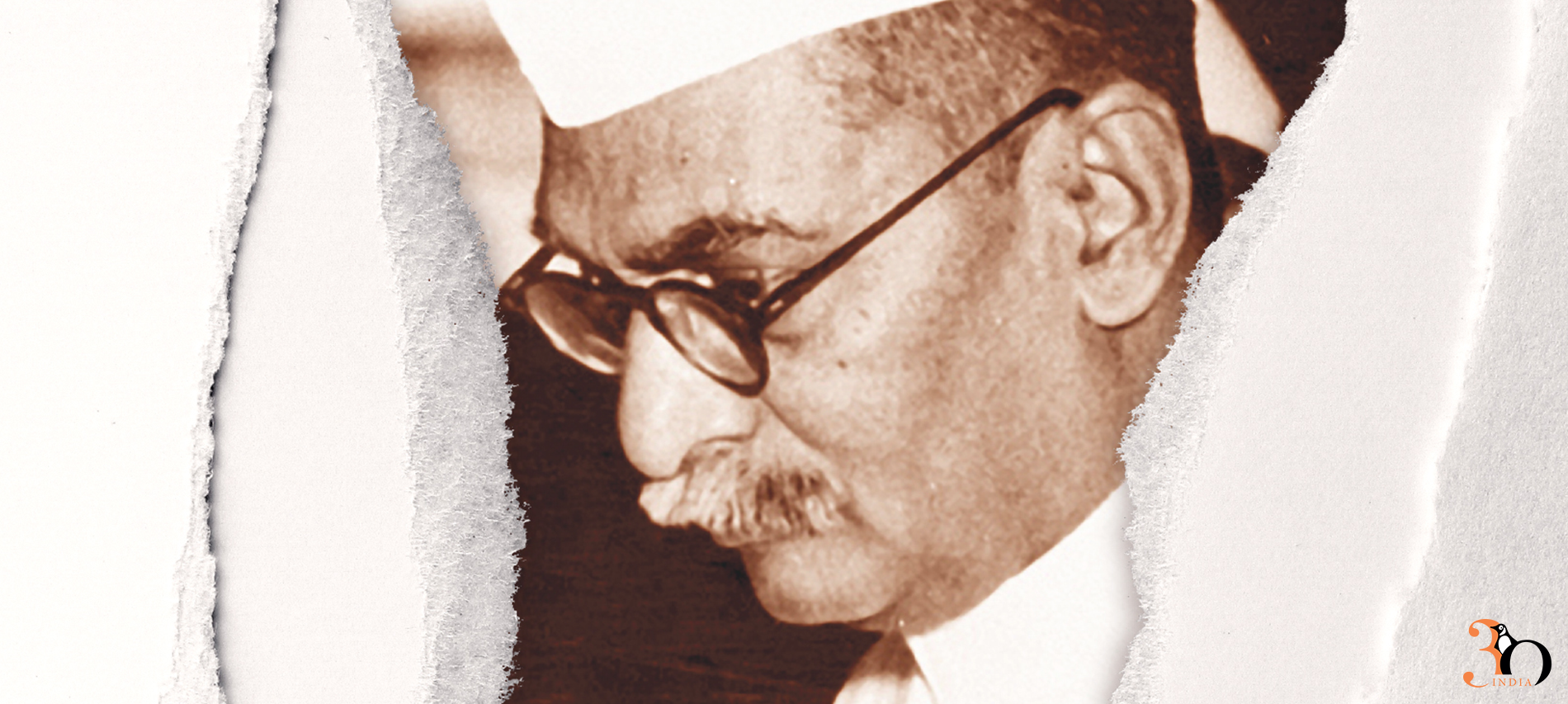Meet Nicky and Noni — the uber cool twins from author Sonia Mehta’s new series of books for children — ‘My Book of Values’.
Like any kid, Nicky and Noni too love to engage in fun activities. But as kids, they get into trouble too.
Nicky and Noni now know that learning good values can be very cool. It can be fun, and super engaging!
Do you want to meet them?

Dear Moms and Dads,
Would you believe that your little one is already old enough to take small decisions by herself or himself? There will be a hundred tiny things that happen to them during the day, where they have to act in a certain way, take small calls and make their own judgement. This then is the right time to prepare and give them that sense of right and wrong that we all grew up with.
But it needs to be done subtly. Today’s child isn’t up to lectures and threats. This is the purpose of this series. Being able to differentiate right from wrong and good from bad, building a strong value system, learning to accept consequences—all through relatable stories and fun activities.
Nicky and Noni are typical twenty-first-century kids. Smart, communicative and alert, they know how to get their way. But as they go about their lives, they encounter situations and challenges during which their value system is tested.
Using Nicky and Noni as protagonists, and with activities that make your child think and apply certain concepts, the series highlights the importance of key values and how they make a difference in life.
We’ve tried to make the series fun and engaging while communicating a single message: that in today’s time, BEING GOOD IS COOL.
Find out what new lesson Nicky and Noni learnt today! Grab your copy of ‘My Book of Values’ by Sonia Mehta now!

Tag: book nibbles
It’s Nicky and Noni’s Birthday! But Why Aren’t They Happy?: ‘Being Grateful is Cool’ — An Excerpt
Sonia Mehta’s new series of books for children — My Book of Values, explores why having values is not just important, but totally cool!
In Being Grateful is Cool, the author shows us why it’s essential to learn the meaning of gratefulness and acknowledge the kindness of others.
But on Nicky and Noni’s birthday, something seems to be amiss…is it gratefulness? Let’s find out!



 Do Nicky and Noni learn how cool it is to be grateful? Find out with Being Grateful is Cool today!
Do Nicky and Noni learn how cool it is to be grateful? Find out with Being Grateful is Cool today!

Nicky and Noni, It’s Not Cool To Lie: ‘Being Honest is Cool’ — An Excerpt
Author Sonia Mehta’s new series of books for children — My Book of Values, is all you need to make a preachy value education lesson fun for your child!
Being Honest is Cool not only shows us why it’s important to be honest, but also that honesty is a totally cool thing to cherish!
But we all must be allowed a mistake or two before we know what’s cool and what’s not. Do you think Nicky and Noni can figure a way out?




Find out what Nicky and Noni do next with Sonia Mehta’s Being Honest is Cool!

“Where I sweated and wilted, Edwina was as cool as a cucumber”, 'The Last Vicereine' — An Excerpt
In the spring of 1947, Lord and Lady Mountbatten set foot in the sultry heat of Delhi. A woman of unparalleled charisma, influence and beauty, Edwina Mountbatten was also one of Jawahar’s closest. Little did anyone know that their lives were about to change forever as lines would be drawn through the soul of undivided India.
A beautiful, heart-breaking tale of love, loss and unflinching faith, Rhiannon Jenkins Tsang’s The Last Vicereine takes us through a blossoming relationship that was one of a kind, amidst the storm of Partition.
Here is an excerpt from the novel:
My God, India was hot! Standing on the tarmac at Palam airport, the heat took my breath away. Everything was white. My eyes ached from the brightness. Had I been living so long in the darkness that I had forgotten the light?
Where I sweated and wilted, Edwina was as cool as a cucumber. We had landed ages ago and the boxes were mostly unloaded. The Viceroy and Vicereine Designates had been received by the waiting dignitaries and Dickie had long since finished inspecting the guard of honour. Yet she tarried.
She stood about ten feet away from the foot of the steps to the aircraft. All fizz and sparkle, her weight resting seductively on to one hip, she was deep in conversation with two Indian men. Already, they were under her spell. They were Liaquat Ali Khan, General Secretary of the Muslim League, and Jawaharlal Nehru, Vice President of the interim government. Both of them were famous and I recognized them immediately from newsreels, papers and books. The handsome, charismatic Nehru was the man most likely to be the Prime Minister of the new independent India after we left. But it looked like Edwina knew them personally. She had greeted them like they were long-lost friends. Now she was chatting animatedly, talking French style, with her hands and shoulders, as was her way.
The rest of us were gathered by the cars, waiting to leave the airport. Dickie’s face was inscrutable. But he pulled awkwardly at the hem of his jacket as if trying to straighten it when it was not creased. It was getting embarrassing. She was almost flirting. Did she know she was keeping everyone waiting? If she did, she didn’t seem to care.
Squinting and shading my eyes against the sun, I saw that now Nehru was doing the talking. He must have said something very funny for Khan rolled his eyes to the sky and all three of them burst out laughing.
It was a relief when at last we got in the cars.
‘Best keep the windows up as much as you can once you enter Delhi,’ the young British officer from the 14th Punjabi Regiment warned. He closed our car door gently, almost as if he were tucking children up in bed.
I was squashed between the side of the car and Ronnie Brockman who seemed owl-like in his spectacles. He, in turn, was wedged against a bulging padlocked briefcase and Elizabeth Ward. Just after we landed Edwina had thrust the shoebox containing the tiara into my hands for safe keeping. Tenderly, I cradled it in my lap as the cars sped towards New Delhi.
On the outskirts of the city we stopped so that Edwina and Dickie could transfer into the horse-drawn landau for the final leg of the journey to Viceroy’s House. I could not see the point of such a show for there was a marked lack of crowds to welcome the new Viceroy and Vicereine. Out of nowhere, I remembered that in 1912 someone had thrown a bomb at the elephant carrying the then Viceroy, Lord Hardinge, and his wife when they were passing through Chandni Chowk in Old Delhi. The Viceroy had sustained serious injuries, and the mahout had been killed. And now Dickie and Edwina were out in front in the open-topped carriage. They smiled through clenched teeth at the non-existent crowds, and hated one another. They had not exchanged more than a few words during the whole flight.
Through the windscreen of the car I watched the landau with its mounted escort of the Viceroy’s bodyguard, wheel past India Gate. Facing the Gate was a high stone canopy underneath which stood a monumentally square, almost Soviet-style statue of King George V.
‘Look!’ Ronnie Brockman pointed to the great cupola dome of Viceroy’s House. In the distance, it seemed to float on a cushion of the palest blue. ‘Designed by Sir Edwin Lutyens. Isn’t it magnificent?’ Ronnie had been in New Delhi during the war when he was Secretary to Lord Louis in his capacity as Supreme Allied Commander South East Asia. He was gearing up for the role of tour guide. ‘The city of New Delhi was commissioned in 1911, and designed by Lutyens and his colleague Herbert Baker. It is in a unique style, as you will see, combining Western classicism with Indian decorative motifs.’ Elizabeth and I nodded dutifully. Judging the danger of bombs, stones and Molotov cocktails to be minimal by this point, I rolled the window down.
There was no wind, not even the promise of a breeze. The pennants on the lances of the Viceroy’s bodyguard barely moved. The men were tall in their turbans, splendid in white breeches, black jackboots and red jackets. The hooves of their horses clattered as they rode a neat collected trot.
‘North Block, South Block.’ Ronnie Brockman was feeling at home, proudly indicating the two great administrative blocks of red sandstone, one on either side of the road, each topped with its own miniature dome. Here was the heart of the British Raj that ruled over four hundred million people. I wondered who might be looking down at us from behind the black unblinking windows. The size and the scale of the buildings made Whitehall look like a toy town. Surely it was Britain that was ruled by India, not the other way round?
Grab your copy of ‘The Last Vicereine’ here today!

Managing ADT (Attention Deficiency Trait)
D Overloaded Circuits by Edward M. Hallowell DAVID DRUMS HIS FINGERS on his desk as he scans the e-mail on his computer screen. At the same time, he’s talking on the phone to an executive halfway around the world. His knee bounces up and down like a jackhammer. He intermittently bites his lip and reaches for his constant companion, the coffee cup. He’s so deeply involved in multitasking that he has forgotten the appointment his Outlook calendar reminded him of 15 minutes ago.
Jane, a senior vice president, and Mike, her CEO, have adjoining offices so they can communicate quickly, yet communication never seems to happen. “Whenever I go into Mike’s office, his phone lights up, my cell phone goes off, someone knocks on the door, he suddenly turns to his screen and writes an e-mail, or he tells me about a new issue he wants me to address,” Jane complains. “We’re working flat out just to stay afloat, and we’re not getting anything important accomplished. It’s driving me crazy.”
David, Jane, and Mike aren’t crazy, but they’re certainly crazed. Their experience is becoming the norm for overworked managers who suffer—like many of your colleagues, and possibly like you— from a very real but unrecognized neurological phenomenon that I call attention deficit trait, or ADT.
Caused by brain overload, ADT is now epidemic in organizations. The core symptoms are distractibility, inner frenzy, and impatience. People with ADT have difficulty staying organized, setting priorities, and managing time. These symptoms can undermine the work of an otherwise gifted executive. If David, Jane, Mike, and the millions like them understood themselves in neurological terms, they could actively manage their lives instead of reacting to problems as they happen.
As a psychiatrist who has diagnosed and treated thousands of people over the past 25 years for a medical condition called attention deficit disorder, or ADD (now known clinically as attention-deficit/ hyperactivity disorder), I have observed firsthand how a rapidly growing segment of the adult population is developing this new, related condition. The number of people with ADT coming into my clinical practice has mushroomed by a factor of ten in the past decade. Unfortunately, most of the remedies for chronic overload proposed by time-management consultants and executive coaches do not address the underlying causes of ADT.
Unlike ADD, a neurological disorder that has a genetic component and can be aggravated by environmental and physical factors, ADT springs entirely from the environment. Like the traffic jam, ADT is an artifact of modern life. It is brought on by the demands on our time and attention that have exploded over the past two decades. As our minds fill with noise—feckless synaptic events signifying nothing—the brain gradually loses its capacity to attend fully and thoroughly to anything.
The symptoms of ADT come upon a person gradually. The sufferer doesn’t experience a single crisis but rather a series of minor emergencies while he or she tries harder and harder to keep up. Shouldering a responsibility to “suck it up” and not complain as the workload increases, executives with ADT do whatever they can to handle a load they simply cannot manage as well as they’d like. The ADT sufferer therefore feels a constant low level of panic and guilt. Facing a tidal wave of tasks, the executive becomes increasingly hurried, curt, peremptory, and unfocused, while pretending that everything is fine.
To control ADT, we first have to recognize it. And control it we must, if we as individuals and organizational leaders are to be effective. In the following pages, I’ll offer an analysis of the origins of ADT and provide some suggestions that may help you manage it.
This is an excerpt from HBR’s 10 Must Reads (On Managing Yourself). Get your copy here.
Credit: Abhishek Singh
Why is 2008 an Unforgettable Year for India?: ‘India at 70’ — An Excerpt
Author Roshen Dalal in her new book, ‘India at 70’, explores the journey of India through its 70 years since Independence in the minutest details. The enthralling read is not just a dive into the rich history of the country, but also a celebration of the major milestones in every aspect and field of society.
In the following excerpt from the book, Roshen Dalal takes a deeper look into why the year 2008 will always be considered unforgettable in the history of modern India.
The year 2008 had some unforgettable moments.
Floods are not uncommon in the monsoon season, but in August that year, the floods in Bihar were exceptionally severe. River Kosi changed course, and over 2.3 million people were affected.
In October, the Indo-US Civil Nuclear Agreement was signed and was considered a landmark treaty. According to this, the US would provide India with nuclear fuel and technology for peaceful use.
On 26 November, disaster struck. Terrorists attacked Mumbai. Over 150 people were killed, and more than 300 were injured. The places attacked were Chhatrapati Shivaji Maharaj Railway Terminus, Oberoi Trident Hotel, Taj Mahal Palace Hotel, Leopold Cafe, Nariman House and Cama Hospital. Showing great bravery, police official Hemant Karkare of the Mumbai Anti-Terrorist Squad, Vijay Salaskar, senior police inspector, and Ashok Kamte, additional commissioner of Mumbai Police, tried to stop the terrorists, but lost their lives in the process. Major Sandeep Unnikrishnan of the National Security Guard was also killed. In response to these attacks, the National Investigation Agency was set up in December as a counterterrorism body.
THE 2008 SUMMER OLYMPICS: In the 2008 Olympics, held in Beijing, Abhinav Bindra won a gold medal in shooting, in the men’s 10 m air rifle event. Vijender Singh won a bronze medal in boxing, in the middleweight category, and Sushil Kumar won a bronze medal in wrestling, in the 66 kg freestyle category.
SLUMDOG MILLIONAIRE: Slumdog Millionaire, a 2008 British film directed by Danny Boyle, is based on the novel Q & A (2005) by Vikas Swarup, an Indian diplomat. It tells the story of Jamal Malik, an eighteen-year-old from the Mumbai slums, who wins the Indian version of Who Wants to Be a Millionaire? by answering every question correctly. He is arrested and accused of cheating, but through flashbacks, he explains how he came to know each answer. The film won eight Academy Awards and seven BAFTA Awards. The lead actors were Dev Patel, Freida Pinto, Madhur Mittal, Anil Kapoor and Irrfan Khan.
The music, by A.R. Rahman, was a great hit, particularly the song ‘Jai Ho’. Rahman won the Golden Globe Award in 2009 for the best original score and two Academy Awards—for the best original score and the best original song (‘Jai Ho’). Resul Pookutty, along with Richard Pryke and Ian Tapp, won the Academy Award for the best sound mixing.
Revisit every significant moment in India’s journey since 1947 with Roshen Dalal’s ‘India at 70’!

A ‘Great Tragedy’: ‘Raymie Nightingale’ — An Excerpt
‘Raymie Nightingale’, by Kate DiCamillo, is a beautiful story of friendships born in a storm. As Raymie realised that everything in her world depends on her, she finds herself competing with her close friends and coping with loss and grief. What emerges as a result are everlasting bonds of friendship that change their lives forever.
Here’s an excerpt from the novel.
There were three of them, three girls.
They were standing side by side.
They were standing to attention.
And then the girl in the pink dress, the one who was standing right next to Raymie, let out a sob and said, “The more I think about it, the more terrified I am. I am too terrified to go on!”
The girl clutched her baton to her chest and dropped to her knees.
Raymie stared at her in wonder and admiration.
She herself often felt too terrified to go on, but she had never admitted it out loud.
The girl in the pink dress moaned and toppled over sideways.
Her eyes fluttered closed. She was silent. And then she opened her eyes very wide and shouted, “Archie, I’m sorry! I’m sorry I betrayed you!”
She closed her eyes again. Her mouth fell open.
Raymie had never seen or heard anything like it.
“I’m sorry,” Raymie whispered. “I betrayed you.”
For some reason, the words seemed worth repeating.
“Stop this nonsense immediately,” said Ida Nee.
Ida Nee was the baton-twirling instructor. Even though she was old – fifty at least – her hair was an extremely bright yellow. She wore white boots that came all the way up to her knees.
“I’m not kidding,” said Ida Nee. Raymie believed her.
Ida Nee didn’t seem like much of a kidder.
The sun was way, way up in the sky, and the whole thing was like high noon in a Western. But it was not a Western; it was baton-twirling lessons at Ida Nee’s house in Ida Nee’s backyard.
It was the summer of 1975.
It was the fifth day of June.
And two days before, on the third day of June, Raymie Clarke’s father had run away with a woman who was a dental hygienist.
Hey, diddle, diddle, the dish ran away with the spoon.
Those were the words that went through Raymie’s head every time she thought about her father and the dental hygienist.
But she did not say the words out loud any more because Raymie’s mother was very upset, and talking about dishes and spoons running away together was not appropriate.
It was actually a great tragedy, what had happened.
That was what Raymie’s mother said.
“This is a great tragedy,” said Raymie’s mother.
“Quit reciting nursery rhymes.”
It was a great tragedy because Raymie’s father had disgraced himself.
It was also a great tragedy because Raymie was now fatherless.
The thought of that – the fact of it – that she, Raymie Clarke, was without a father, made a small, sharp pain shoot through Raymie’s heart every time she considered it.
Sometimes the pain in her heart made her feel too terrified to go on. Sometimes it made her want to drop to her knees.
But then she would remember that she had a plan.
Join Raymie on her quest to find her father, order your copy today!

‘The Story of Ravana, Ram or Sita?’: ‘The Girl Who Chose’ — An Excerpt
India’s favourite mythologist Devdutt Pattanaik’s ‘The Girl Who Chose’ brings a fresh perspective to what we have commonly known of the Ramayana — the story of Ram.
However, it has largely gone unnoticed that it was the choices that Sita had made which becomes the pivot for the Ramayana.
Here’s an excerpt from Devdutt Pattanaik’s book telling us why the story of Sita is at the heart of all that happens in the epic.
“Once upon a time, there was a man called Ravana, also known as Paulatsya—being the descendent of Rishi Pulatsya from his mother’s side. He was king of Lanka and ruler of the rakshasas, who tricked a princess called Sita, dragged her out of her house in the forest and made her prisoner in his palace. He was killed by Sita’s husband, Ram, the sun-prince. This story is called the Pulatsya Vadham, or the killing of the descendent of Pulatsya.
The story of Ravana’s killing is part of a longer tale called the Ramayana, which tells the story of Ram from his birth to his death. However, in the din of Ravana’s cruelty and Ram’s valour, something is often overlooked—the story of Sita, the girl who chose.
Valmiki, author of the Ramayana, written over 2000 years ago, tells us how Sita is different from Ram and Ravana. Ravana does not care for other people’s choices, while Ram never makes a choice as, being the eldest son of a royal family, he is always expected to follow the rules. But Sita—she makes five choices. And had Sita not made these choices, the story of Ram would have been very different indeed. That is why Valmiki sometimes refers to the Ramayana as the Sita Charitam, the story of Sita.
Do you know what were the choices that Sita had made? Grab a copy and find out now!
'A Very Long Epic': 'The Boys Who Fought' — An Excerpt
When an army of five fights against a battalion of a hundred, what happens? Devdutt Pattanaik’s ‘The Boys Who Fought’ looks at the Mahabharata not as an epic war for revenge, but one for the cause of dharma.
Here’s an excerpt from Pattanaik’s Mahabharata with a twist.
Once upon a time, there was a man called Vyasa. His father was a sage. His mother was a fisherwoman. He was born on a river island, and had a dark complexion.
Vyasa grew up watching animals fight. Then he saw humans fight. And he wondered, what was the difference?
In the forest, the mighty eat the meek. In human society, the mighty can take care of the meek. This is dharma, realized Vyasa. It creates a decent human society.
Inspired, Vyasa wrote an incredible story in 1,00,000 verses, split into eighteen chapters, about the fight between a hundred brothers and their five cousins.
Ganesha, who has the head of an elephant, wrote down Vyasa’s story, which became renowned as the Mahabharata, the great Indian epic, for Bharata is another name for India.
Others called it Bharata Kavya, the song of the Bharatas, for the hundred brothers and their five cousins belonged to the Bharata clan, also known as the Kuru clan, which once ruled over India.

Some people called the story Vijaya, the story of victory, for it describes how the Pandava five, with just seven armies, defeated the Kaurava hundred, with eleven armies, in an eighteen-day-long war.
Vyasa, however, insisted that his epic should be called Jaya, a victory in which no one was defeated. For, in the story, Krishna of the Yadu clan, cousin to both the Pandavas and the Kauravas, reveals a different kind of fight—a greater fight that takes place before weapons are raised on the battlefield, a fight of thoughts and emotions that arises inside our minds and hearts.

Can’t wait to read more? ‘The Boys Who Fought’ is coming soon!

7 Lessons of Communal Harmony from India’s first President that are the Need of the Hour
Written by Dr. Rajendra Prasad, India Divided is a first-hand testimony of what went on behind the Partition that forever changed the lives of the people in the Indian subcontinent.
Dr. Prasad’s book not only traces the origins of the Hindu-Muslim conflict but also explores how Partition was an unviable solution to a question that has remained unresolved till today.
Here are seven instances from India Divided which show us why it’s important to seek peace, love and mutual respect on either side of the line
When one must not forget to remember that a society does not thrive in isolation and that history does not begin with loss.

When the stakeholders must remember that a solution does not seek lives, but is in the interest of one and all.

When one must not forget that ‘homogenous’ people is perhaps not an answer to the question.

When one must realise that oppression, in any form, can never help a society progress.

When one must emphasise on the importance of an inclusive society.

When one should hark back to the times of complete peace and harmony, a state that is perhaps not unachievable.

And when one must not forget that years ago, the natural state of cohabiting for Hindus and Muslims, was not in neighbouring nations.

Dr. Rajendra Prasad’s words help us find our bridge over troubled waters even years after he wrote them. Grab your copy of India Divided here today!















